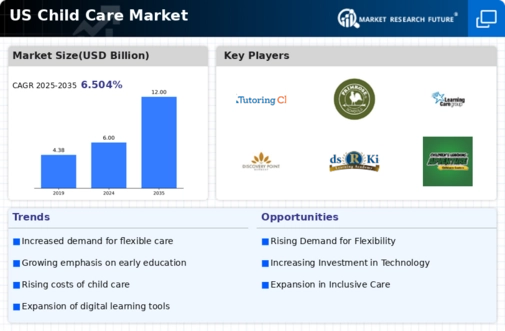The competitive landscape of the US Child Care Market is characterized by a multitude of providers ranging from small, independent operators to large, national chains, each vying for a share of a robust and growing industry. Factors such as evolving parental needs, regulatory changes, and demographic shifts have influenced market dynamics, leading to innovation in the types of services offered. In this environment, companies are focusing on quality, safety, educational approaches, and customer satisfaction to differentiate themselves.
The landscape is heavily influenced by trends like increased digitalization and the rising demand for flexible childcare solutions as more families seek accessible and affordable options that fit their busy lifestyles.Social Circle is a notable entity within the US Child Care Market, known for its unique platform that connects families with caregivers and educational resources. This company has established a strong presence by prioritizing community engagement and support, which resonates with today's parents seeking personalized care options for their children.
Social Circle strengthens its market position through an extensive screening process for caregivers and educational content tailored to children's varying developmental needs. The company's focus on safety, nurturing, and collaborative learning provides it with a competitive edge. Moreover, Social Circle capitalizes on its user-friendly platform, allowing parents and guardians to easily find, hire, and manage childcare solutions that meet their specific requirements, fostering a community-oriented approach that builds trust among users.Tutoring Club operates strategically within the US Child Care Market, focusing on academic support through personalized tutoring services.
With offerings that range from one-on-one sessions to group workshops, Tutoring Club aims to enhance child education outside standard childcare provisions. Its strength lies in the ability to adapt educational curricula to meet diverse learning needs and styles, building marketing initiatives that appeal to parents' priorities for child development and academic success. The company has made strategic moves, including partnerships and acquisitions, which have expanded its footprint across various states, thereby enhancing its service availability.
Through strong branding and a commitment to educational excellence, Tutoring Club positions itself as a leader in the educational support sector, continuously evolving its services and utilizing technology to provide innovative solutions that cater to modern parenting demands in the US.




















